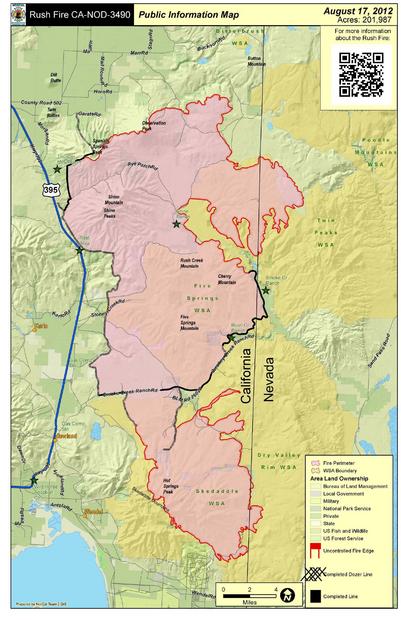Twin Peaks Post Fire Survey
May 18th and 19th 2013
Twin Peaks Wild Horse and Burro Herd Management Area
Summary:
Three experienced wildlife observers with binoculars: Jesica Johnston, Carrisa Johnston, and Kathy Gregg
91 miles traveled in 11 hours – we drove slowly with many stops to look for animals
1 horse and 8 burros found
Vegetation in burn area in very good condition with many wild flowers, low grasses, a lot of cheat grass and what appears to be some Russian/Siberian crested wheatgrass (non-native).
Many juniper trees burned beyond survival but many were not burned or will survive the fire damage. Sage areas clearly show the patchwork pattern of the fire, with many areas completely unburned within the Rush Fire perimeter.
Saw some bitterbrush drill seeding along Rye Patch Road. Very little black burned grass noticeable now compared with last fall immediately following the Rush fire (see Rush fire report http://protectmustangs.org/?p=2729 ) and now most of the burned area is covered with spring vegetative growth.
Most notable was the lack of any animal trailing that can usually be seen and would have been very obvious with the new carpet of forage – believe this is because #1 no livestock on the public land and #2 very few wild horses and burros left on the Twin Peaks Herd Management Area. Also noticeable was the lack of horse and burro tracks and manure on the HMA.
Other animals observed: one coyote, two golden eagles, vultures, crows/ravens, two rabbits, birds, ducks and geese at Horne Ranch reservoir, 2 deer, ~ 20 antelope, two curlew, small fish in the Robbers Roost pond and some burrowing ground squirrels and pika.
Unless otherwise noted, all photographs were taken by Jesica Johnston and Carrisa Johnston.
[side note: BLM Litchfield Wild horses and burros facility approx. 200-300 animals maximum] Saturday 5/18/2013
Smoke Creek Road
42 miles on HMA – 4 hours
Very few signs of any Wild horses and burros in this area (trailing/tracks/manure)
1 adult brown burro 8 miles east of Hwy 395 and 1 adult dark brown burro 15 miles east of Hwy 395
Wild Burro- Smoke Creek Road
Turned around at Smoke Creek Ranch owned by Bright-Holland Corporation – gate locked with no trespassing signs and 150+ cattle visible and lush green fields all fenced off.
Rye Patch Road
10 miles on HMA – 2 hours
One set of fresh horse tracks on road and few manure piles but not stud pile (mare or only one horse?) In the past (pre-fire) numerous manure piles and eight horses seen in this area.
We saw one old wild horse stud pile at Spanish Springs trough – new looking barbed wire strewn in pathway (very dangerous for any animal – we moved it) No recent signs of horse.
Horne Ranch Road
26 miles approximately half in twin Peaks – 2 hours at dusk
Sunday 5/19/2013
Shinn Ranch Road
13 miles– 3 hours
6 Burros (5 adults and 1 yearling) north side of road about ¼ mile east of Highway 395
Conclusion
In our two days of observation we saw very few signs of any wild horses or burros and only saw one dark horse about a mile south of Shinn Ranch Road about 4 miles in from Hwy 395 – it was far off but 99% sure it was a horse in the far canyon and the only wild horse we saw on this trip.










